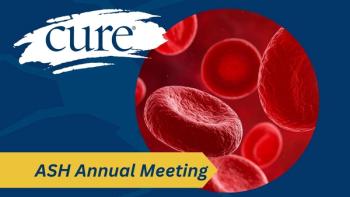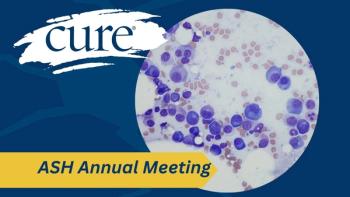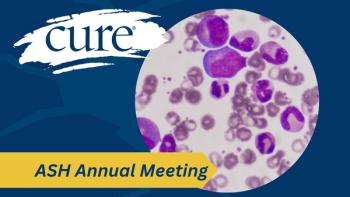
Predicting Response to Therapy in CLL
Transcript:
Nicole Lamanna, MD: So, when does somebody need treatment for chronic lymphocytic leukemia? The most important thing is, what are their blood counts? This is a range. There are not exact cutoffs to this. If somebody’s hemoglobin is around the 10 grams per deciliter rate—somewhere between 10 and 11–their platelets are generally under 100, and their neutrophils are low, that would be one reason we might consider initiating somebody to have therapy. Remember, as I said, it’s the good counts being low from which they will start having symptoms. So, if you’re very anemic, you’re going to feel tired all the time. If your platelets are very low, you’re going to have more easy bruising or bleeding. If the neutrophils are low, you might have more increased risk of infections. Fevers, and usually sinus and chest, are the most common infections we see in our CLL patients.
The goal is to catch somebody before they actually start having symptoms from the disease. Now, everybody’s tempo is different. And again, this has to do with the biology of their disease. There are some people in whom their white count will rise very rapidly. Their good counts will start to fall very quickly. So, you’re trying to catch them before they start having symptoms. There are some people in whom their white count will rise and then they plateau for a while. And it’ll rise again. So, we’re trying to get an assessment of the tempo of their disease. That will help me to help, or at least to tell them, generally speaking, when they might need to initiate therapy.
One thing about CLL, as opposed to many other cancers, is you can often plan for treatment. This is very different from other cancers where you have to get rid of it. Be done and move out. You don’t want it to spread. This is a blood disorder. It is all over. It circulates all over your body. So, it’s really trying to catch the disease before it starts giving somebody symptoms. Their counts are low. That’s when we initiate therapy.
The other thing is, if their disease is starting to grow in the lymph node area, as they get big and bulky, that can be uncomfortable to patients. So, if they’re growing very quickly, that would be another indication to treat somebody.
There’s a couple of different flavors of CLL patients. There are some people that will get to therapy only because their blood counts are poor. They have no lymph nodes, whatsoever. There are some people with more lymph node-based disease. Their blood counts are fine. And the third set of patients are patients who have both. As they grow, the disease grows in the lymph nodes and their blood count starts declining. And so, those are indications for therapy.
Before somebody needs therapy, that’s when we talk about other testing. We talk about whether or not somebody needs imaging; so a CAT scan. I typically do a bone marrow if they have cytopenias, meaning their counts are low, just to say that this is all due to CLL. Some patients have what we call autoimmune complications. That means that their body can make antibodies to one of their cell lines. Sometimes I will change my recommendations of therapy slightly, if they also have that as a component to their disease. So, it’s always good to look in the marrow.
We also do some tests that we did initially at diagnosis, such as the FISH (fluorescent in situ hybridization) test. These are blood tests that look at chromosomal abnormalities that are associated with your disease. People ask me, “What do you mean by chromosomal abnormalities? I have this in my DNA and my makeup? Was I born with this?”
We are talking about abnormalities that are on your CLL cells. About 50% of patients have chromosomal abnormalities that are associated with the lymphocytes, or the CLL cells. Some are actually favorable to have, so it’s not bad. People always ask me this. And then, some are unfavorable to have. We check this because this does have implications for treatment. In the past couple of years, this has been one of the major achievements and accomplishments for CLL. For patients who have a deletion called a 17p deletion, ibrutinib has been approved. It was initially approved for this subset of patients, and it clearly has transformed the treatment of patients with CLL.
So, this is a no-brainer. If patients have a 17p deletion, they’re absolutely going to get a drug like ibrutinib. That really has transformed the landscape.
Now, ibrutinib also happens to be approved for all comers with CLL. It initially got approved for 17p patients, but it is also approved for relapse in frontline patients. Anybody with CLL can get ibrutinib therapy. That completely has transformed the disease. So, you really want to know what the patient’s markers are before. If you have 17p, you need to get a novel therapy like ibrutinib.
Transcript Edited for Clarity





